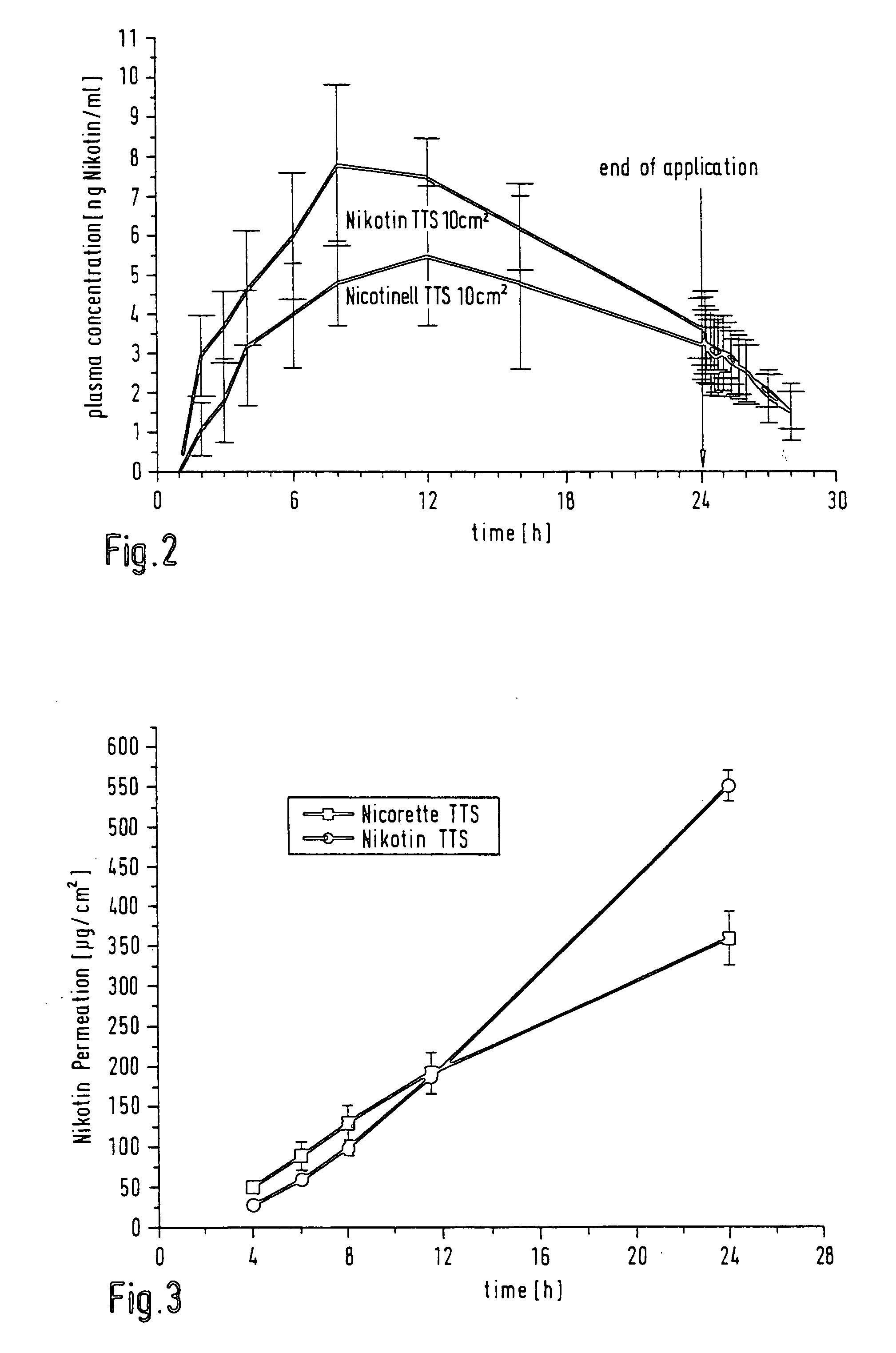Highly flexible transdermal therapeutic system having nicotine as active substance
- Summary
- Abstract
- Description
- Claims
- Application Information
AI Technical Summary
Benefits of technology
Problems solved by technology
Method used
Image
Examples
example 1
[0041] DE-A 43 32 094 discloses products and processes which permit the introduction of volatile pharmaceutical active ingredients or auxiliaries into TTSs. To this end, the volatile constituent is thickened by dissolving a polymer and, where appropriate, other solid auxiliaries in the volatile constituent as solvent in such a way that this solution can be coated onto a substrate web (=process step 1). This coated product is then laminated to other separately produced layers of the TTS, and then the volatile substance can reach equilibrium in the entire system through diffusion (=process step 2). The layer which was previously liquid solidifies there by diffusion of the volatile constituent, which is the only solvent, into the other layers of the TTS.
[0042] The composition of the polymer solution for process step 1 is as in table 2. An application system is used to coat this over the surface of a film made from polyethylene terephthalate of thickness 19 .mu.m, the weight per unit ar...
example 2
[0049] EP-B 0 303025 discloses a printing process with which nicotine can be introduced into each TTS. With the aid of this principle and printing equipment from the company Tampoprint, round areas of the active ingredient solution as in table 4 were applied by direct printing over the surface of a pressure-sensitive-adhesive layer whose composition was as in table 5, printing about 25 mg of nicotine solution onto an area of about 6 cm.sup.2 of adhesive. The weight per unit area for the pressure-sensitive-adhesive layer as in table 5 was 144 g / m.sup.2.
[0050] After print-application, the printed adhesive layer was immediately covered with a backing layer made from polyethylene terephthalate (15 .mu.m Hostaphan film), to which it was mechanically laminated. The printed areas were stamped out from this composite using a round stamping tool. The diameter selected here for the stamped section was greater by about 4 mm (corresponding to about 8 cm.sup.2 in area) than the diameter of the p...
PUM
| Property | Measurement | Unit |
|---|---|---|
| Linear density | aaaaa | aaaaa |
| Mass | aaaaa | aaaaa |
| Mass | aaaaa | aaaaa |
Abstract
Description
Claims
Application Information
 Login to View More
Login to View More - R&D
- Intellectual Property
- Life Sciences
- Materials
- Tech Scout
- Unparalleled Data Quality
- Higher Quality Content
- 60% Fewer Hallucinations
Browse by: Latest US Patents, China's latest patents, Technical Efficacy Thesaurus, Application Domain, Technology Topic, Popular Technical Reports.
© 2025 PatSnap. All rights reserved.Legal|Privacy policy|Modern Slavery Act Transparency Statement|Sitemap|About US| Contact US: help@patsnap.com


